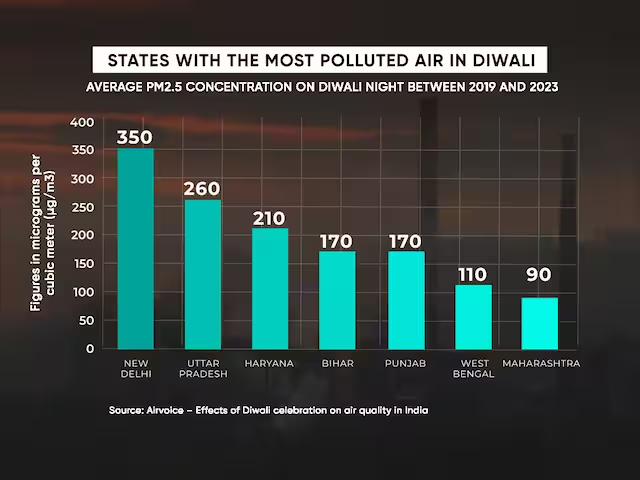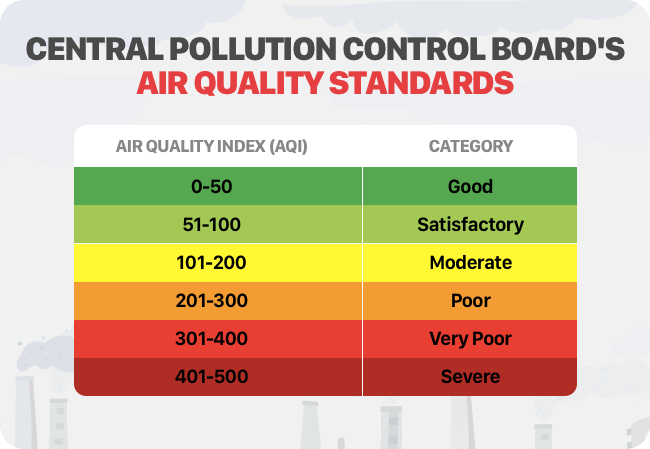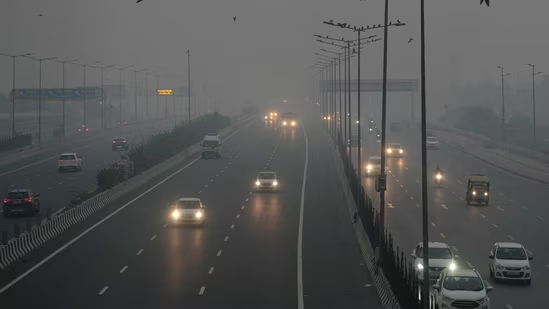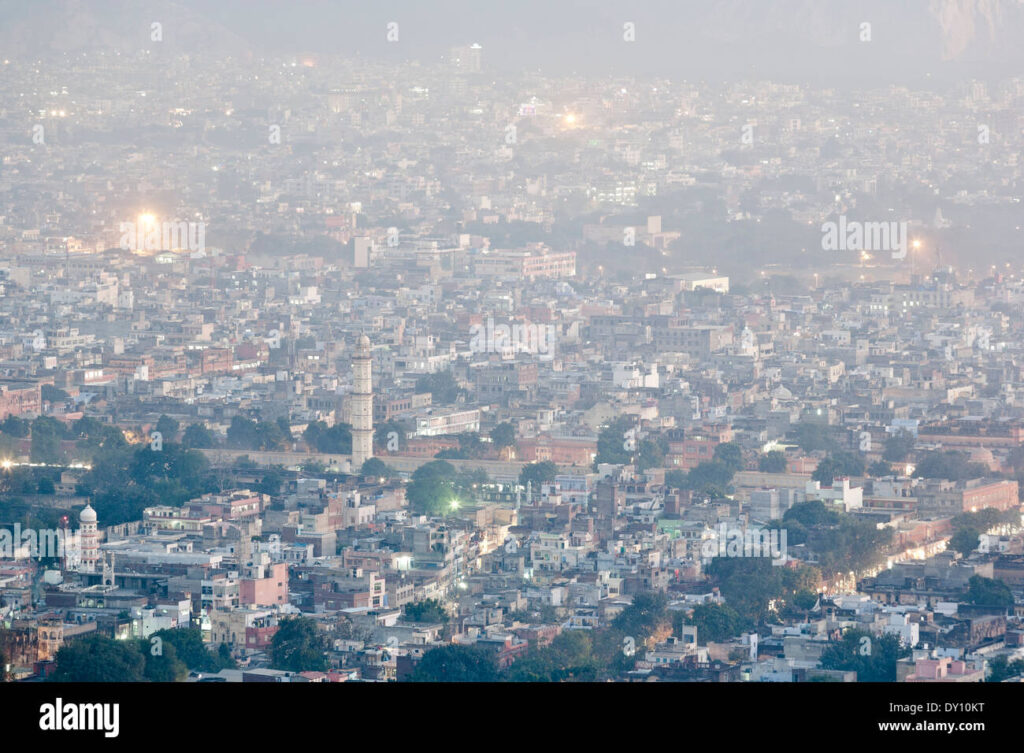Air pollution in major Indian cities has significantly increased following Diwali celebrations, with Delhi’s AQI reaching 362, But pollution also decreases in some cities like Jaipur from the previous years.

Air pollution has surged significantly in Delhi, Mumbai, Kolkata, Patna, and other cities over the past few days since the Diwali celebrations. Delhi’s AQI rose to 362 at 10:30 AM on Saturday, November 1.
AQI (Air Quality Index):
The AQI is categorised as follows: a reading between 0 and 50 is deemed “good”; 51 to 100 is classified as “satisfactory”; 101 to 200 is considered as “moderate”; 201 to 300 is labelled “poor”; 301 to 400 falls under “very poor”; and 401 to 500 is identified as “severe”.
A rise in Air pollution is a common trend, especially in northern India where other factors like a drop in temperature and, stubble burning, etc., add to the air pollution woes. Took a look at the data from major Indian cities to get an idea of how much air quality has deteriorated post-Diwali celebrations.

AQI (Air Quality Index) Report:
Here is the AQI data for major Indian cities, for October 30, October 31, and November 1, 2024:
| City | October 30 | October 31 | November 1 |
|---|---|---|---|
| Delhi | 352 (Poor) | 392 (Very Poor) | 339 (Poor) |
| Mumbai | 127 (moderate) | 130 (moderate) | 169 (moderate) |
| Bangalore | 74 (satisfactory) | 95 (satisfactory) | 135 (moderate) |
| Kolkata | 154 (Unhealthy) | 117 (Moderate) | 140 (moderate) |
| Hyderabad | 78 (satisfactory) | 85 (satisfactory) | 135 (Moderate) |
| Jaipur | 145 (Poor) | 150 (Poor) | 184 (Unhealthy) |
This table shows that air quality in most northern cities like Delhi and Jaipur was particularly poor, especially after Diwali celebrations, with levels reaching unhealthy levels in the first days of November. Other cities like Bangalore and Hyderabad experienced comparatively better air quality, with moderate to good AQI levels.
Diwali Air pollution in Delhi:
On Friday, Delhi pollution board reported no significant change in the AQI during this year’s Diwali celebrations, despite numerous violations of pollution regulations.
According to the Delhi pollution Control Committee, the levels of PM2.5, a hazardous particulate matter, dropped by 4% percent compared to last year’s Diwali. In contrast, PM10 levels, which refer to particulate matter measuring 10 micrometers or smaller, saw an increase of 11 percent.

Data from the Central Pollution Control Board (CPCB) indicated that this year marked Delhi’s most polluted Diwali in three years. The city’s 24-hour average AQI on Thursday was recorded at 330, in comparison to 218 in 2023 and 312 in 2022.
The report highlighted that most air quality monitoring stations in Delhi reported similar pollution levels, with 37 out of 39 stations indicating “very poor” air quality.
Diwali Air pollution in Jaipur:
The Pollution level of Jaipur on Diwali decreases by 40% percent, AQI level during this Diwali is 232 which is less than previous years, while the AQI level few days before Diwali was 300 to 400 in Jaipur. Previous year the AQI level in 4 regions of Jaipur was more than 500.

Two Reasons behind less Pollution this year:
1.Diwali was made in two days so that, firecrackers are not fired in a single day firecrackers are fired in two days so the average AQI level of six regions on 31 October is 232.
2.The sales of firecrackers is 10-15% percent less this year and Green firecrackers are more sold this year on Diwali in Jaipur.
This year due to less pollution, clear weather, clear coming sun rays, and due to speed of wind 8-10km/h the visibility is more clear than the previous years. This year the visibility range is 800 meter, while previous year the visibility range is recorded as 8-10 meter.
